Pin Retained Restoration Important Notes
1. Types Of Pin-Retained Restorations

2. Failures Of Pin Retained Restorations
- If the failure is within the restoration, the restoration can fracture
- If the failure is at the interface between the pin and the restorative material, the pin can pull out the restorative material
- If the failure is within the pin, the pin can fracture when stressed beyond its ultimate tensile strength
- If the failure is at the interface between the pin and the dentin the pin can pull out the dentin
- Within the dentin, the dentin can fracture
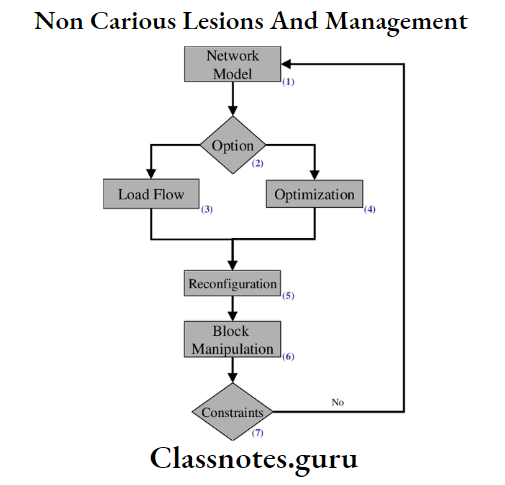
Pin Retained Restoration Short Essays
Question 1. Pin retained restoration.
Answer:
Pin Retained Restoration:
Pin Retained Restoration Definition:
Any restoration that requires the placement of pin/pins in the dentin to provide sufficient retention and resistance from the restoration
Pin Retained Restoration Advantages:
- Conserves tooth structure
- Increases resistance and retention
- Economic
- Requires fewer recall visits
Pin Retained Restoration Disadvantages:
- Dentin fracture
- Decreased strength of amalgam
- Perforation
- Microleakage
Pin Retained Restoration Indications:
- Grossly carious teeth
- Full coverage restoration
- Extended preparation
Pin Retained Restoration Contraindications:
- Occlusal problems
- Aesthetic problems
Pin Retained Restoration Pins:
- Types- Cemented pin
- Self threaded
- Friction locked pin
Pin Retained Restoration Sizes:
- Minuta-0.015″
- Minikin – 0.019″
Read And Learn More: Operative Dentistry Short And Long Essay Question And Answers
- Minim – 0.024”
- Regular-0.031″
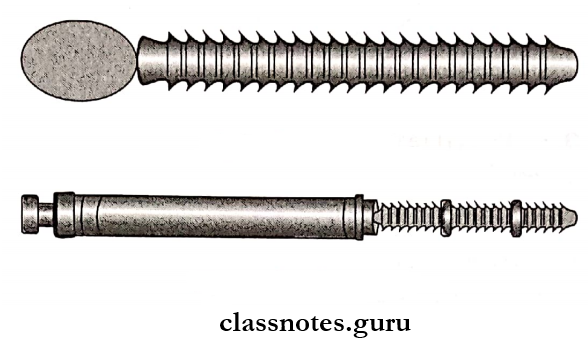
Pin Retained Restoration Design:
- Standard
- Self shearing
- Two in one
- Link series
- Link plus series
Question 2. Self-threaded pin./Self-threading pin.
Answer:
Self-Threaded Pin:
- Introduced by Going in 1966
- Size – 0.0015″ – 0.004” larger than pin holes
- Retention – By threads of pins
- The Material Used – Stainless steel, Titanium
Self-Threaded Pin Indications:
- Vital teeth
- Presence of sufficient dentin
Self-Threaded Pin Advantages:
- Ease of retention
- Superior retention
- No need for cement media
Self-Threaded Pin Disadvantages:
- Pulpal stress
- Dentinal crazing
- Microleakage
- Loosening of pins
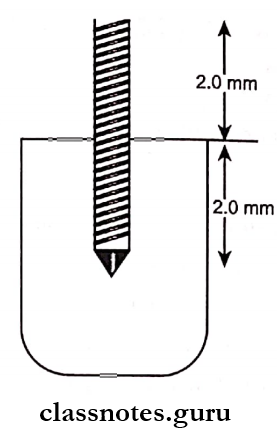
Question 3. TMS (Thread mate System).
Answer:
TMS (Thread Mate System):
Thread Mate System Advantages:
- Variety of design
- Variety of pin sizes
- Good retention
- Color coding
- Gold plated
- Reduced corrosion
Thread Mate System Pin Sizes
- Minute-0.015″
- Minikin – 0.019″
- Minim – 0.024”
- Regular-0.031″
Thread Mate System Pin Design:
- Standard – 7 mm long, flat head
- Self-shearing – On reaching the bottom of the pinhole, the head separates automatically
- Two in one
- Two pins join each other at a joint
- When the peripheral pin shears off the other pin can be reused for another pin channels
- Link series
- Latch head
- Self shearing type
- Link plus series
- Sharp threads
- Tapered tip
- Shoulder stop
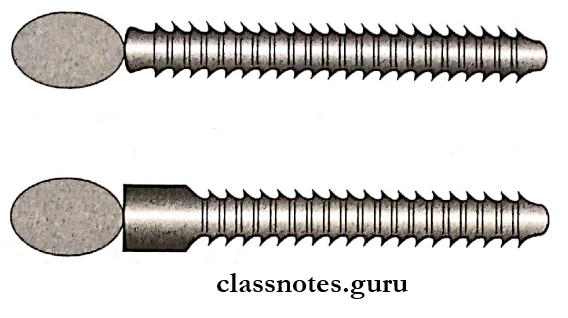
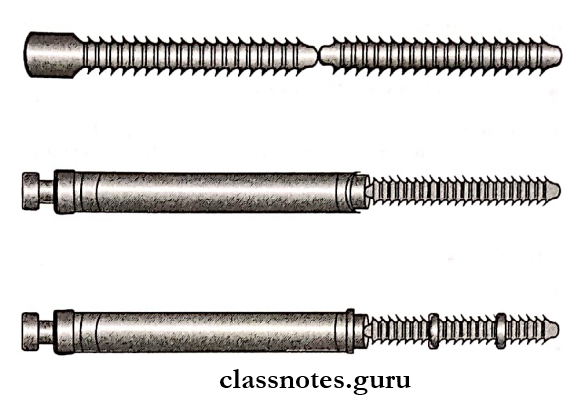
Pin Retained Restoration Short Answers
Question 1. Self-shearing pins.
(or)
Pins in restorative dentistry.
(or)
Types of pins in amalgam restoration.
Answer:
Pins In Restorative Dentistry:
1. Direct Pins:
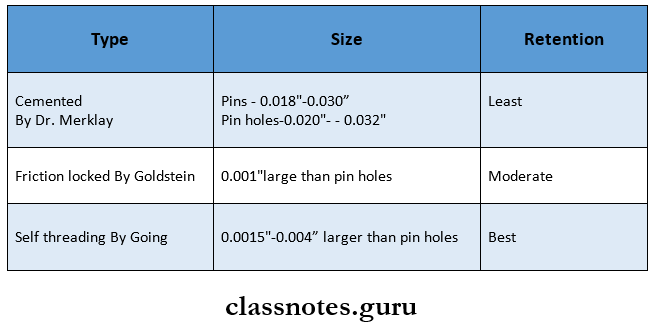
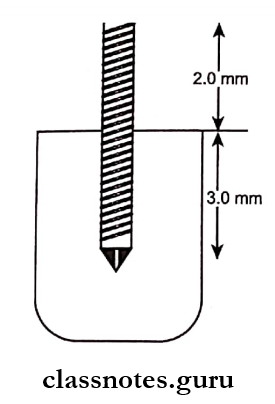
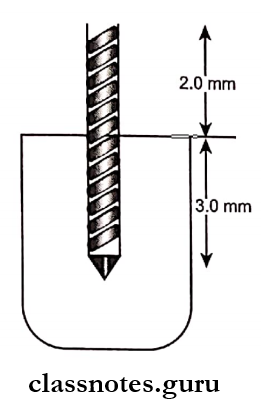
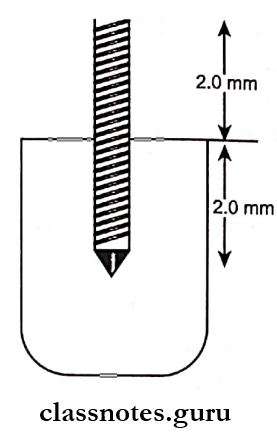
2. Indirect Pins:
- Smaller Than Pin Holes
- Cast gold pins
- Wrought precious metal pins
Pin Retained Restoration Viva Voce
- The self-threaded pin is the most retentive
- Cemented pins are the least retentive pins
- Pulpal stress is maximal with self-threading pin and least with cemented pin
- Threaded Mate System (TMS} is the most widely used self-threading pins
- TMS pins exhibit less microleakage than other pins
